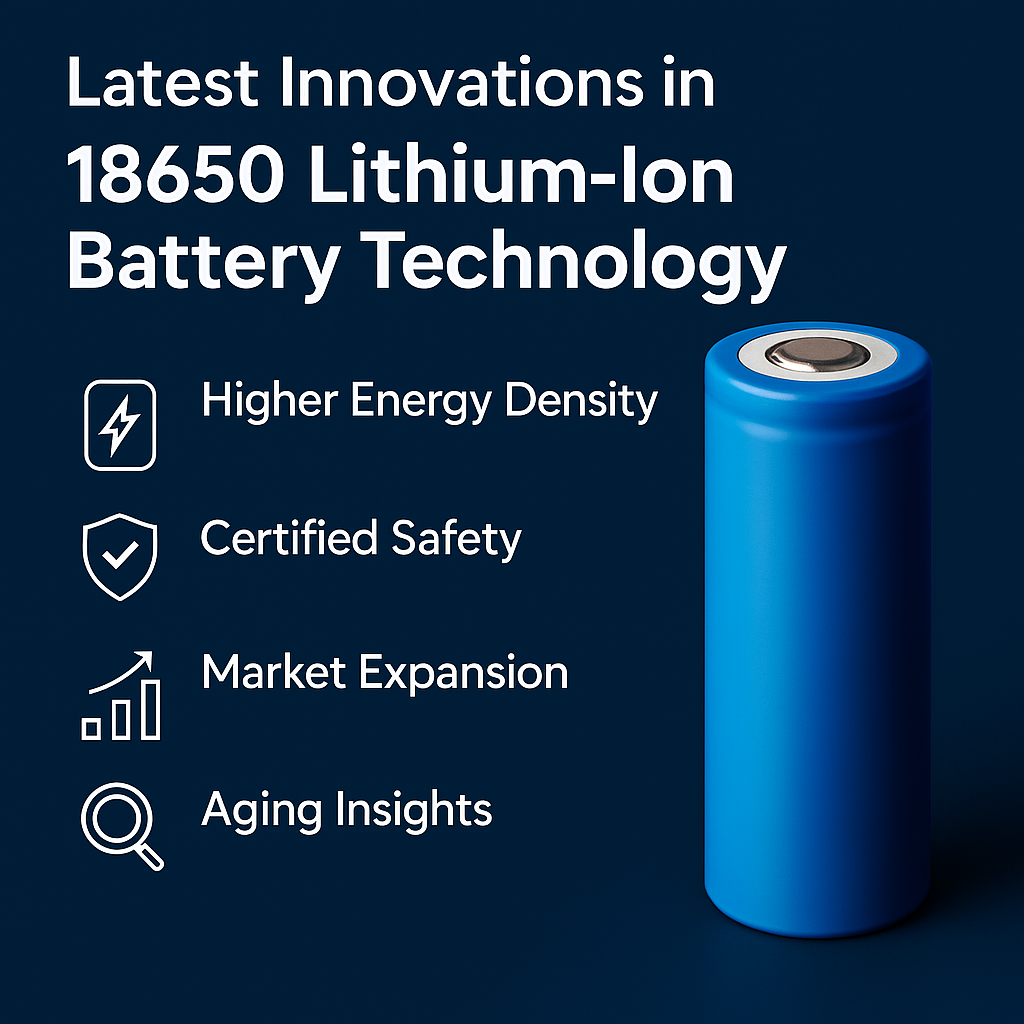The 18650 lithium-ion battery remains one of the workhorses of portable and industrial energy storage—powering everything from laptops and electric bikes to power tools and electric vehicles. Recent developments continue to extend its performance envelope, ensuring its relevance through 2025 and beyond.
 1.Silicon‑Enhanced Anodes Drive Higher Energy Density
1.Silicon‑Enhanced Anodes Drive Higher Energy Density
A breakthrough from NanoGraf has pushed the 18650 format to new limits. Their silicon‑anode technology now delivers a 4.0 Ah cell (~810 Wh/L) and a roadmap toward 4.3 Ah cells . These high‑energy cylindrical cells offer around 28% greater runtime, with maintained compatibility with existing manufacturing processes—making them ideal for device upgrades and EV use .
2. Certified Safety Meets Energy Boost
NanoGraf hasn't just focused on output—they recently secured UL1642 and IEC62133 certifications for their 3.8 Ah 18650 cells, confirming industrial-grade safety 。 This makes them viable for applications demanding rigorous standards, such as military, medical, and aerospace equipment.
3. Market Expansion & Future Forecasts
Analysts expect the global 18650 lithium battery market to reach nearly ¥20 billion (~USD 2.8 billion) by 2025 . Growth is being driven by electrification trends in vehicles, renewable energy integration, and rising demand for portable power. North America, in particular, shows robust year-on-year expansion for both 18650 and 21700 formats .
4. Aging Analysis & Usability Insights
Recent research introduced novel impedance and color‑visual analysis methods to map aging patterns inside 18650 cells during fast charging。 This insight paves the way for improved electrode designs, better tab placement, and optimized electrolytes—enhancing both lifespan and safety.
5. ⚙️ What’s Next for 18650 Technology?
While solid‑state batteries are edging closer to commercialization with projected 400 Wh/kg densities , mature 18650 tech continues to benefit from silicon innovations, certification, and cost-effective scalability. Its modular form factor makes it ideal for retrofits in existing systems, even as newer formats emerge.
The 18650 lithium-ion battery isn't fading—it’s evolving. Silicon-anode breakthroughs now bring >4 Ah capacity per cell, certified safety, and market growth across major regions. Add to this improved manufacturing, lifecycle insights, and emerging applications in EVs, grid storage, and industrial systems—and you have a format that's both mature and forward-looking. For users and developers seeking balance in energy density, safety, and adaptability, the 18650 remains a top-tier choice.